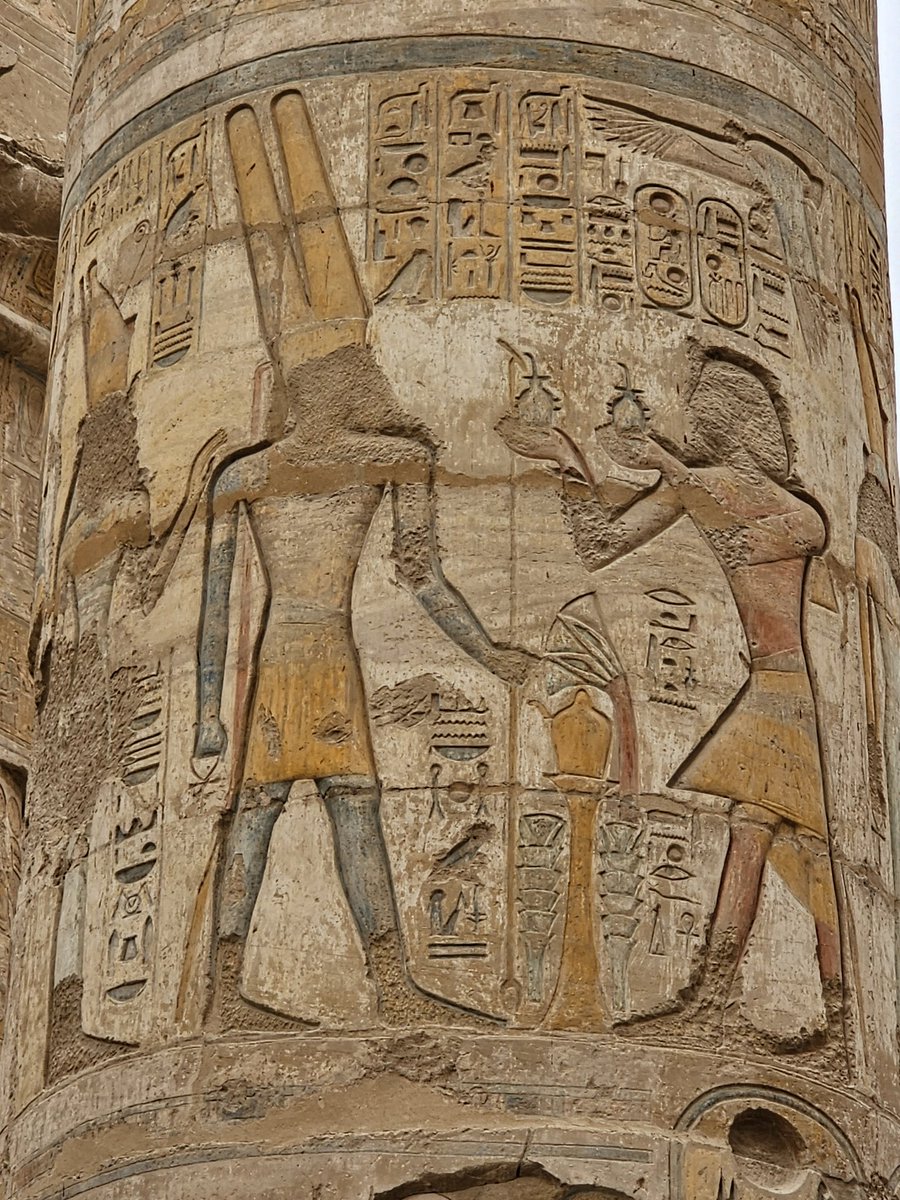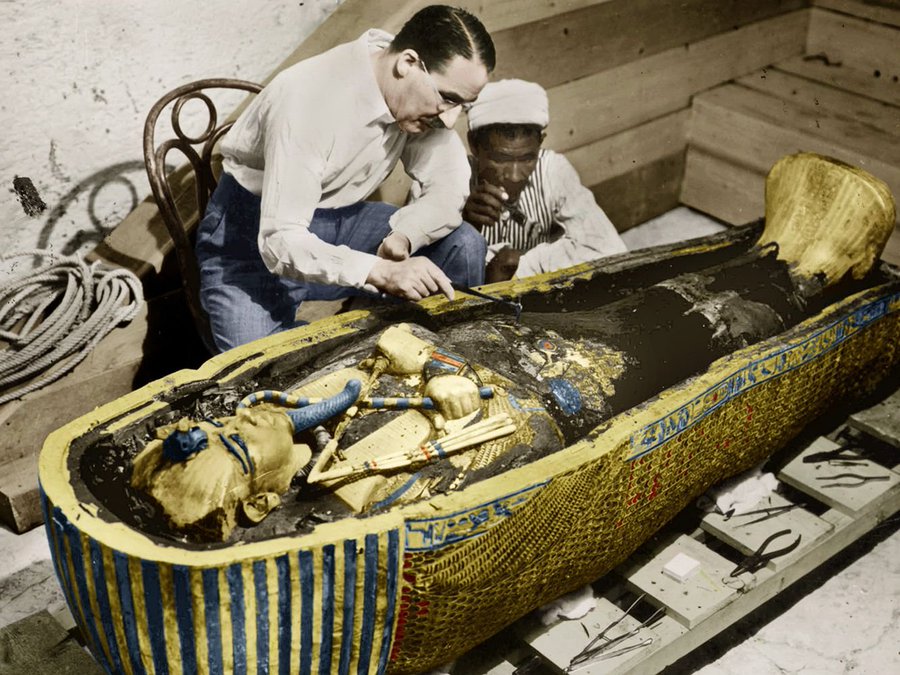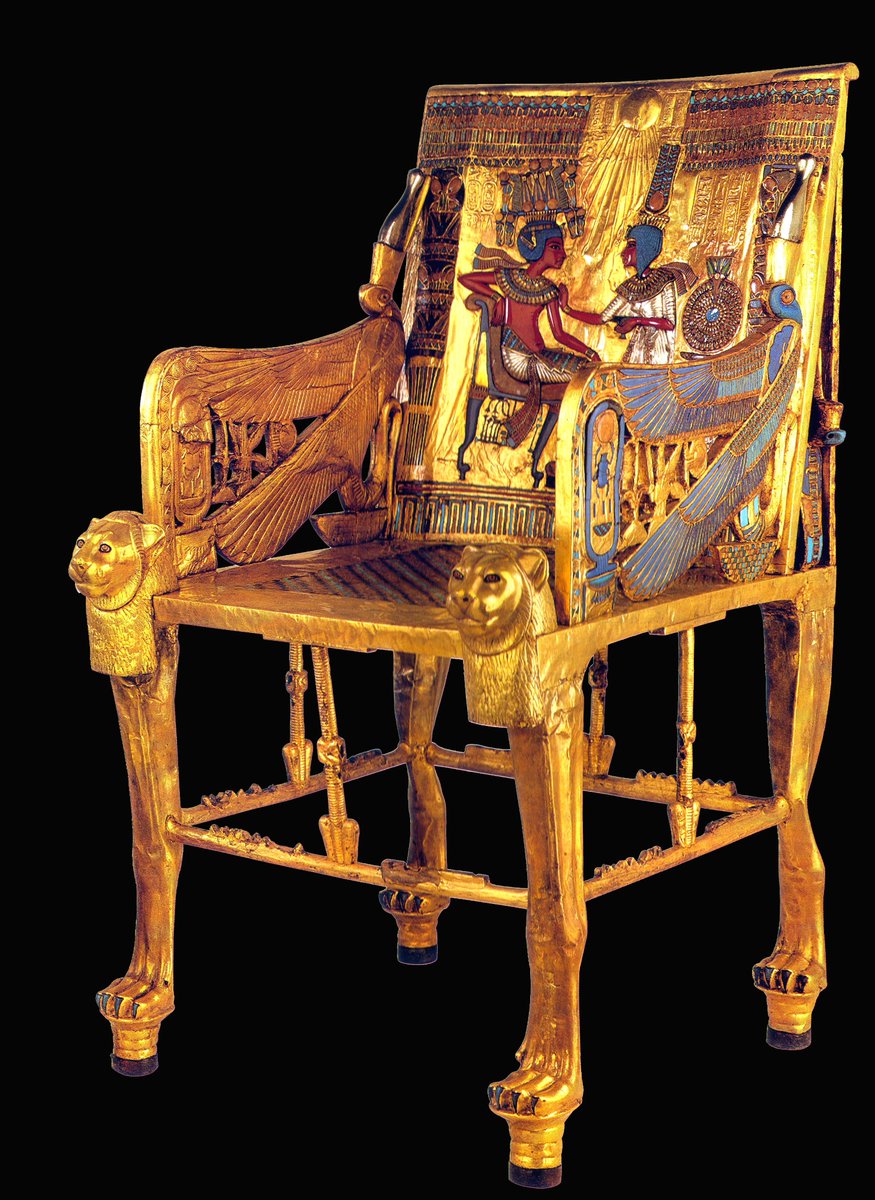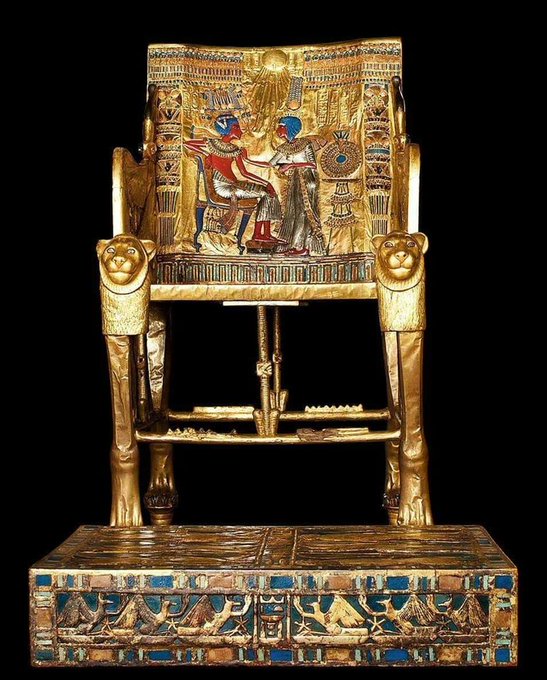1/ T-32 of my Tutankhamun 100 day countdown: Today a golden falcon. #Egypt #Archaeology #Tutankhamun #history #Archaeology #Tutankhamen #Toutankhamon #Tutancâmon #Tutanchamun #توتعنخآمون #ancient #Tutankamón #ツタンカーメン #图坦卡蒙 #圖坦卡蒙 #Τουταγχαμών #тутанхамон #투탕카 

2/ This marvelous gilded wood statue of a falcon with blue glass eye markings has a surprising function. #Mythology #Art #Gold #Egypt #Archaeology #AncientArt #History #Jewelry #Ancient #AncientEgypt
#Egypt #Egypte #Egipto #Egito #Αίγυπτος #Ägypten #מִצְרַיִם #Egitto #エジプト
#Egypt #Egypte #Egipto #Egito #Αίγυπτος #Ägypten #מִצְרַיִם #Egitto #エジプト

3/ It was attached to the pole of Tutankhamun's golden state chariot. The solar disk would have appeared behind the head of the king's horses as in this idealized scene of Ramesses II's chariot. #이집트 #Египет #Єгипет #埃及 #埃及 #مصر 

4/ The statue base is curved to rest on the chariot pole. #Archaeology #archaeohistories #Archäologie #archéologie #考古学 #考古学 #考古學 #arqueología #archeologia #archeologie #αρχαιολογία #पुरातत्व #고고학 #arqueologia #arkeoloji #археологія #arkeologi #археология 

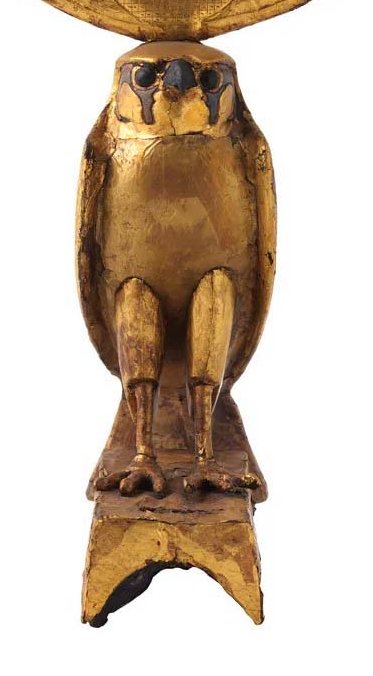

5/ The falcon represents Horus, god of kingship. Pharaoh was a living incarnation of the god. The solar disk on its head linked it to the solar god Re-Horakhty, A fusion of Re & Horus, like this inlaid gold pectoral necklace (right) 



6/ An elaborate engraving on the solar disk depicts the morning form of the sun god, Khepri. It also spells out Tutankhamun's prenomen, a.k.a. "coronation name" Neb-khepuru-Re like the cartouche at right. So the king is equated with Horus & the sun god. 



7/ monumental art hints that these chariot "solar disks" were often decorated with symblic scenes like this painted image of Ramesses II's chariot at the Battle of Kadesh with miniature scene of the king receiving a sword from Amun (right) 


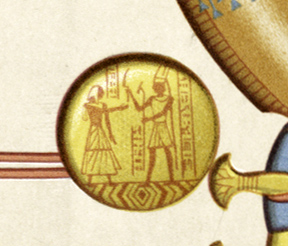
8/ Tutankhamun's golden falcon & the "visual poetry" of his coronation on the disk is unique. Nothing like it has ever been found. The symbol is repeated on the back side of the disk which faced the king as he rode in his chariot. 



9/ close-up view of the decoration on the back face of the disk. Cobras on either side of the smaller disk have symbols of life and dominion. They wear the Double Crown of Upper & Lower Egypt on their heads. Below the winged beetle are the remaining glyphs of the king's prenomen. 



10/ This marvelous golden falcon chariot decoration has only recently received the attention it deserves. It appears in a recent exhibition of Tutankhamun's treasures, but was never seen in the exhibitions of the 1960s & 1970s. 

11/ Even more obscure, and not nearly as fine, are two more gilded falcons once attached to some of the king's 6 chariots. I don't believe they have even been displayed in the Cairo Museum. Hopefully they will be in the new Grand Egyptian Museum. Here is Burton's photo of one 

12/ Here is Burton's photo of the 3rd falcon. These 2 have plain solar disks & are not as beautiful as the first. 

13/ These 3 golden falcons are often overlooked, but are unique & priceless examples of this unique decoration of a pharaoh's chariots 





15/ Tomorrow on my Tutankhamun 100 day countdown to the centenary of his tomb's discovery on November 4th, the exquisite ivory headrest rich with religious symbolism #mythology #archaeohistories 

• • •
Missing some Tweet in this thread? You can try to
force a refresh










